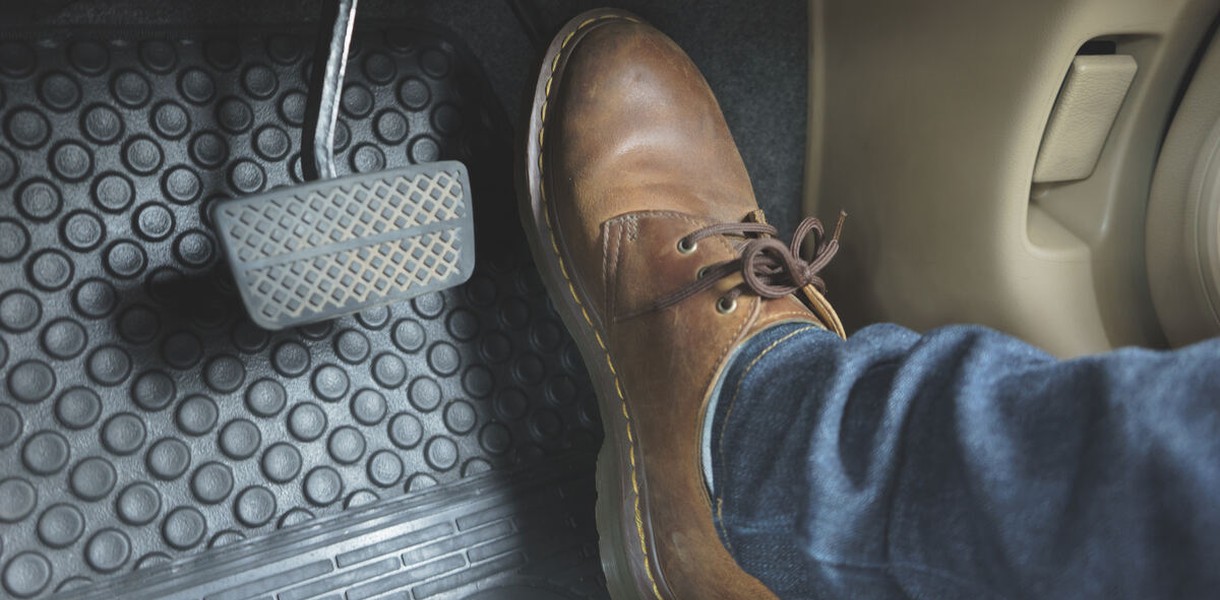Understanding the functions and proper use of your car's pedals is essential for safe and efficient driving. Pedals are key elements in vehicle control, and their proper use can make all the difference in critical moments.
⚠️ The clutch pedal is fully depressed with each gear change in cars with manual transmission.
🔑 The brake pedal must be used in combination with the engine brake for efficient and safe driving.
❌ The accelerator pedal is not pressed suddenly and never simultaneously with the brake pedal.
Contents:
- What pedals does a car have and what role do they play?
- How to use car pedals correctly?
- Common mistakes in using car pedals
What pedals does a car have and what role do they play?
Everything you need to know about vehicle pedals
Most cars, new models, or used cars purchased from car dealerships, whether they have a manual or automatic transmission, are equipped with a number of pedals for the primary control or steering of the vehicle. The differences in the number and position of the pedals occur depending on the type of transmission: manual or automatic.
How many pedals do manual transmission cars have?
Classic cars with manual transmissions have three pedals. These are:
- Clutch: located on the left side, used for shifting gears.
- Brake: the middle pedal, used to slow or stop the car.
- Accelerator: the right pedal, which regulates the speed of the vehicle.
What pedals do cars with automatic transmission have?
Cars with automatic transmission have one pedal in minus, namely the clutch pedal.
- Brake: located on the left.
- Acceleration: positioned on the right.
In the case of cars with automatic transmission, the absence of a clutch pedal simplifies the use of the pedals, making these cars easier to drive for novice drivers.
How to use car pedals correctly?
Correct use of the clutch pedal (for manual cars only )
The clutch is an essential component for changing gears while the vehicle is moving, but also for starting, stopping the vehicle and reversing. Here are some tips for proper use:
- Depress the clutch fully before changing gears. Always make sure the pedal is fully depressed.
- Don't keep your foot on the clutch pedal when you don't need to. This practice, known as "clutch-hopping," can lead to premature wear on your car's clutch system.
- Use the correct gears. Learn to coordinate as precisely as possible the lifting of your left foot from the clutch pedal with the simultaneous pressing of your right foot on the accelerator pedal.
Judicious use of the brake pedal
The foot brake is one of the most important safety features of your car. Here's what you need to do:
- Apply the brakes gradually, not suddenly, to avoid losing control of the car, especially on slippery surfaces.
- Maintain a safe distance from the vehicle in front. Maintaining a safe distance from the vehicle in front of you in traffic allows you to use the brake pedal more easily.
- Learn to use engine braking. In a manual transmission car, shifting into a lower gear can help slow the vehicle without overloading the brakes.
Accelerator pedal and correct operation
Acceleration controls the speed of your vehicle and is essential for smooth driving. Here's what you should know about using your car's accelerator pedal:
- Press the pedal gently for gradual acceleration. Sudden acceleration can lead to loss of traction or excessive fuel consumption.
- Avoid pressing the brake and accelerator pedals simultaneously. This behavior can cause the brakes to overheat and general wear and tear on the brake system and engine.
Common mistakes in using car pedals
Behaviors to avoid while driving
- Confusion between the brake and accelerator pedals, especially in automatic cars. This mistake can be avoided by correctly positioning your feet on the pedals.
- Incomplete clutch depression. This can lead to unpleasant noises and gearbox wear.
- Excessive use of the brakewithout also using the engine brake, which can cause rapid wear of the brake pads.
Other practical tips for drivers
- Position your feet correctly. Your heel should be on the floor and the front of your foot on the pedal. This provides better control.
- Practice pedal coordination. Try practicing the transition between pedals in a safe space, such as a driving range.
- Check your seat position. The correct distance between you and the pedals allows you to fully depress the pedals without effort.
Mastering the correct use of your car's pedals is a crucial step in becoming a safer and more confident driver. Whether you drive a manual transmission car or an automatic transmission vehicle, practicing these techniques will help you prevent mistakes and improve your driving efficiency.
Cover photo source: shutterstock.com
